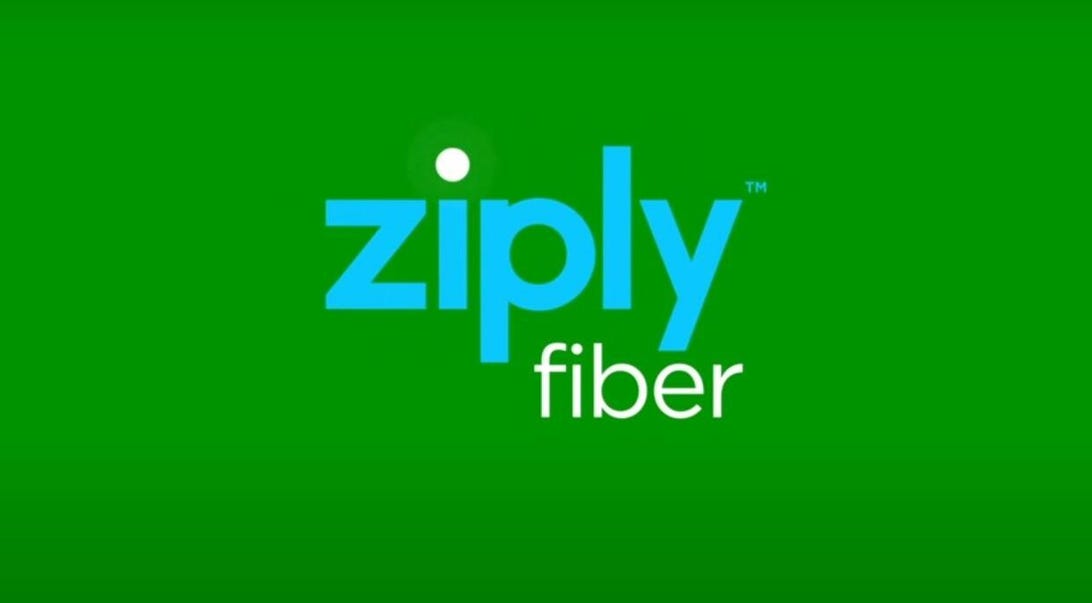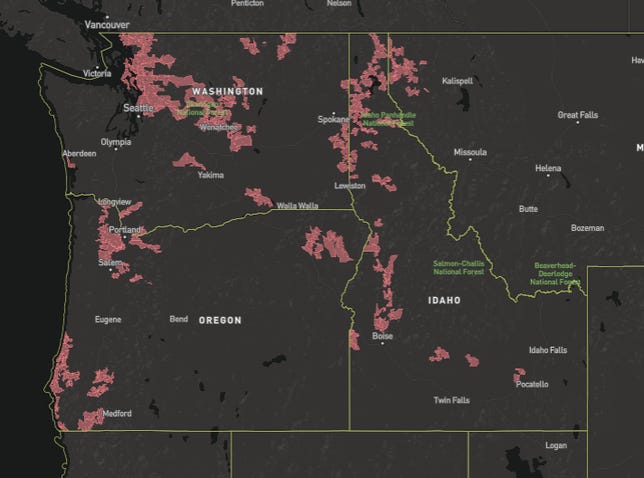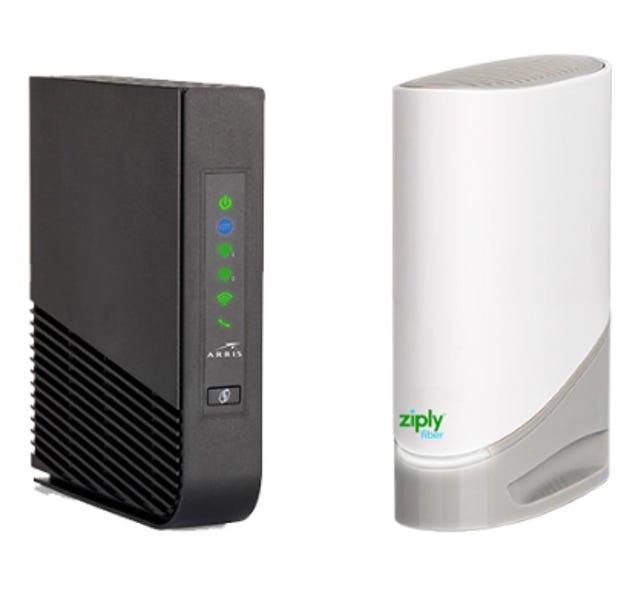
Ziply Fiber
Ziply Fiber is one of the newest contenders in home internet, officially launching service in May 2020 after relieving Frontier Communications of all DSL and fiber networks in Idaho, Montana, Oregon and Washington. The company’s short time in business makes it difficult to give a full, in-depth review, but it’s safe to say that Ziply Fiber is off to a good start.
After a year or so of service, Ziply Fiber stands out for its low introductory rates and reasonable service terms, not to mention the company’s rapid fiber expansion. A series of customer complaints and an average business rating from the BBB indicate there are some lingering growing pains, but I wouldn’t hold that against Ziply too harshly. Customer complaints and minor hiccups are to be expected with any major service transfer.
Like
- Straightforward, affordable pricing
- No data caps, contracts or credit checks
- Dedication to fiber expansion, even in rural areas
Don’t Like
- Low speed tiers for a fiber service
- “C” rating by Better Business Bureau
Ziply Fiber is worth considering for the cheap internet pricing alone, so long as you can get by with the relatively slower speeds. For faster speeds, you’ll have to bump up to its Fiber Gig plan, which is still competitively priced. Ziply Internet — the DSL service — is also worth checking out in rural areas, but speeds and reliability can vary widely by location, so the overall value of Ziply Internet will largely depend on your address. With either service, you’re still getting unlimited data and inexpensive Wi-Fi service without being locked into a contract, and that makes Ziply worthy of consideration for homes in the Pacific Northwest.
Ziply Fiber internet pricing and speed details
Ziply Fiber customers have three speed tier options with symmetrical download and upload speeds, a significant advantage of fiber internet service compared with other internet types, such as cable. Ziply Internet customers only have one plan option, which comes with the fastest max speeds available at your address, up to 115 megabits per second down and 7Mbps up. One plan option may seem limiting, but that’s common among DSL providers.
Ziply Fiber internet plans
| Plan | First-year promo rate | Standard rate (after the promo period) | Max download speeds | Max upload speeds | Internet type |
|---|---|---|---|---|---|
| Fiber 30/30 | $20 | $40 | 30Mbps | 30Mbps | Fiber |
| Ziply Internet (DSL) | $40 | $50 | Varies, up to 115Mbps | Varies, up to 7Mbps | DSL |
| Fiber 100/100 | $40 | $60 | 100Mbps | 100Mbps | Fiber |
| Fiber Gig | $60 | $80 | 1,000Mbps | 1,000Mbps | Fiber |
Ziply Fiber and Ziply Internet plan pricing increases to the standard rate after 12 months of service. The $20 price increase on Ziply Fiber plans feels a bit steep, especially considering that it doubles the price of the Fiber 30/30 plan, but that’s about average compared to other providers. Pricing on AT&T Fiber plans, for example, also increase by $20 per month after the first 12 months. Even after the increase, Ziply Fiber plans are still competitively priced.
Ziply Internet customers will see a $10 increase in their bill after 12 months of service, which brings the cost in line with other DSL providers such as AT&T and CenturyLink.
Low speeds to match the low pricing on fiber service
Ziply Fiber quite possibly has the lowest starting price of any major internet provider, fiber or otherwise, but the speeds that come with the lowest pricing are less impressive. With max download and upload speeds of 30Mbps, Ziply Fiber’s cheapest plan offers the slowest starting speeds of any major fiber provider.
That said, 30Mbps over a fiber connection could be enough speed for light streaming and browsing on two, maybe three devices. I wouldn’t rely on it for much more than that, but if you’re a light internet user — or if you’re just fed up with the single-digit upload speeds that often come with cable, DSL, satellite and other modes of internet — then Ziply’s entry-level fiber plan might be a good fit.
The next speed tier (100/100) is also slower than I’d hope to see from a fiber provider. Speeds of 100Mbps may be more than suitable for your household — as with the 30Mbps plan, it all depends on your needs — but it’s worth noting that other fiber providers offer significantly faster speeds with their midtier plans. AT&T, Frontier Communications and Verizon Fios offer speeds in the 400-to-500Mbps range with their second speed tier, though the pricing may be slightly higher.
All of this is to say that, while the first two Ziply Fiber plans are indisputably cheap, they may not offer as much value as you’ll find from other providers with faster speeds. To get the best bang for your buck, I’d recommend skipping the first two plans altogether and going straight for the gig. Ziply Fiber’s gigabit plan is lower priced than most fiber or cable providers at $60 per month ($80 after 12 months), and it offers significantly greater value than the 30/30 and 100/100 plans.
One good gauge of that value is the cost you’ll pay for each Mbps of download speed. Ziply’s 30 and 100Mbps fiber plans would cost you 67 cents and 40 cents per Mbps during the first year, respectively, and then $1.33 and 60 cents per Mbps after 12 months. With the gigabit plan, you’ll pay 6 cents per Mbps in year 1, and then 8 cents per Mbps after that.

FCC/Mapbox
Ziply targets fiber for 80% of service area
While Ziply Fiber’s speeds may fall short, at least on the lower speed tiers, the company’s dedication to fiber expansion could serve as an example for other providers to follow.
At the time of acquisition, around 30% of the networks received from Frontier Communications consisted of fiber-optic lines. Since then, Ziply Fiber has aggressively expanded its fiber footprint and is on pace to complete fiber builds to upwards of 50% of the territory by the end of 2021, with an end goal of more than 80% coverage, according to a Ziply Fiber spokesperson.
If and when the company reaches 80% fiber coverage, it will have brought fiber connections to more than 1.5 million residents in the Northwest that did not otherwise have one under Frontier, including many residents of rural areas. Ziply Fiber expansions have thus far included small towns such as Tekoa, Washington and Troy, Montana, both with populations of under 1,000, as well as to larger cities throughout the Northwest.
Fiber expansion lightens the load on DSL networks
The arrival of fiber-optic service is exciting news for those who can get it, but it can also be somewhat of a blessing in disguise for Ziply Internet (DSL) customers who can’t.
A Ziply Fiber spokesperson tells CNET that “every customer who moves off of the copper network improves the capacity, reliability and exhibited speed for those who remain, so our goal is to move as many people as possible to fiber as quickly as possible to improve service for everyone.”
In other words, fiber expansion is a win-win for Ziply customers, though perhaps some more than others. Either way, Ziply Fiber seems genuinely invested in improving service for everyone in its service area, and I like that.
Ziply Fiber Wi-Fi, fees and service terms are as good as any
Ziply Fiber fees and service terms largely favor the customer. Wi-Fi equipment fees are lower than most providers and come with whole-home connectivity, while unlimited data and no contract requirements eliminate the risk of surprise hidden fees.

Ziply Fiber
Equipment lease includes whole-home Wi-Fi
At $10 per month, Ziply’s equipment lease fee is already on a par with or lower than most providers, but few providers if any include whole-home Wi-Fi service with the equipment fee.
Ziply Fiber’s equipment rental currently includes a free upgrade to whole home Wi-Fi at no extra cost. In addition to the router, Ziply Fiber Whole Home Wi-Fi service comes with customized Wi-Fi installation and configuration and up to three Wi-Fi extenders.
I should add that the $10 fee for equipment lease and whole home Wi-Fi appears to be a limited time offer — the regular rate is $20 per month. Even at $20, Ziply Fiber’s whole home Wi-Fi service is a good deal, as most providers will charge you $5 or more in addition to the router rental per Wi-Fi extender, if they even offer them at all.
Ziply Fiber service terms and fees won’t add to your bill
Most DSL and fiber-optic internet providers do not have data caps or contracts, and Ziply Fiber is no different. Additionally, and perhaps separate from other providers, the ISP also does not require a credit check for service. With no data caps, contracts or credit checks, customers can comfortably anticipate what their initial costs and monthly pricing will be.
Installation is included at no extra cost for new customers, as is the first month of service. As an added bonus, Ziply Fiber is offering 90 days of Peacock Premium streaming service at no extra cost, a $5 per month value.
All of that said, most providers will offer unlimited data, contract-free service, free installation and some sort of promotional offer like gift cards or streaming services. Still, there’s a lot to like about an internet provider that offers relatively straightforward pricing without arbitrary contracts or data caps — Ziply Fiber delivers that and more.
Ziply Fiber versus cable internet
I’ve compared Ziply Fiber to other DSL and fiber-optic providers thus far, but it’s unlikely that you’ll find those providers in the same service areas as Ziply Fiber. What’s more likely is that you’ll have the option of Ziply Fiber and cable internet from Spectrum, Xfinity or others.
A good rule of thumb is that cable is better than DSL and fiber is better than cable. So if Ziply Fiber service is available in your area, I’d consider it over cable, but if Ziply Internet (DSL) is my only option, I’d likely look at cable first, depending on what DSL speeds are available.
Ziply Fiber can deliver gig download speeds, as can most major cable internet providers, but the fiber-optic connection comes with the advantage of symmetrical upload and download speeds. As a result, you’ll get a better connection for working and learning from home with Ziply Fiber versus a cable connection. Fiber-optic service also has better reliability and connection quality than cable.
As for pricing, Ziply Fiber plans are priced lower than most cable providers. Xfinity does offer a 50Mbps plan for around $25 per month, but the equipment fee is higher than Ziply Fiber’s, and customers may be required to sign a one-year contract to get the lowest price. On the other hand, Spectrum has a lower equipment fee than Ziply Fiber along with unlimited data and contract-free service, but starting prices are much higher at $49 per month.
In short, Ziply Fiber will likely present cheaper plan options, faster upload speeds and better reliability than cable internet.
Customer complaints indicate possible growing pains
Ziply Fiber isn’t included in customer satisfaction reports from the ACSI or JD Power yet, so I turned to the Better Business Bureau for insight into what actual customers think of the service so far.
As of this writing, there are 367 customer complaints regarding Ziply Fiber service filed with the BBB, mostly centered around billing issues. The complaints apparently came in shortly after Ziply Fiber transferred service from Frontier Communications, leading to the BBB recognizing a “pattern of complaints from consumers regarding billing and customer service issues” on July 17, 2020, less than 90 days after Ziply Fiber took over operations. As mentioned above, billing and customer service issues are to be expected with a major service transfer.
The BBB gives Ziply Fiber a “C” rating and attributes the rating largely to the customer service issues detailed above, but also to the “length of time business has been operating.” Similar to how insufficient history can negatively affect a credit score, it seems that Ziply Fiber’s short time in business has an impact on its BBB rating.
Customer complaints and an average BBB score are unfortunate, but I would attribute them more to service transfer issues and the short time in business more than anything else. Considering the company’s low, transparent pricing, favorable service terms and rapid fiber expansion, I would expect customer satisfaction to improve in the near future, but it’s something we’ll continue to keep an eye on.
Summing it all up
Ziply Fiber has low pricing, but low fiber speeds to match unless you go with gig service. If 30 or 100Mbps is enough for your home, I’d say take advantage of that low pricing, but for everyone else, gig service will be the best option.
As for Ziply Internet, the DSL service, the value of your plan will depend on the actual speeds available at your location. Your DSL service could improve as Ziply’s fiber footprint expands, but the best outcome of all would be for fiber to make its way to your address and eliminate the need for DSL altogether. Here’s hoping Ziply keeps making progress.





More Stories
Satellite Internet Broadband Speeds As a Modern Necessity
Internet Banking Security Now More Enhanced
When Internet Marketing Promotions Can Suffer If You Use Audio, Video Or Long Sales Letters